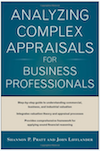Cost Segregations
What is a cost segregation study?
It's a strategic tax tool that allows building owners to reclassify the way they depreciate actual building costs among real estate, land improvements, and personal property categories. (This legitimate reclassification is based on both case law and IRS guidance.) The actual study is completed by qualified appraisers. The net result is to accelerate depreciation from later years to the earlier years of a project's life. This accelerates the depreciation deduction, ultimately improving cash flow.
How does it work?
In the early years of a building's use, certain associated costs are reclassified from longer real estate lives (39 years for commercial and 27.5 years for non-residential real estate) to shorter class lives of 5, 7 and 15 years, respectively.
Let's look at an example with a $1 million building that is currently being depreciated over a 39 year life:
In our example, the $212,500 of depreciation has been accelerated (note that the total amount of depreciation is still $1,000,000 over the life of the project in both cases) and an additional cash flow of $100,000 has been generated from the tax savings by accelerating the depreciation. The net present value of the cash flow at 6% over the life of the building is $66,000.
In order to qualify for this accelerated depreciation, it is imperative that a qualified appraisal firm be contracted to perform the study. An IRS legal memorandum indicates, "As a practical matter, it should be noted that the use of cost segregation studies must be specifically applied by the taxpayer... An accurate cost segregation study may not be based on non-contemporaneous records, reconstructed data, or taxpayer's estimates or assumptions that have no supporting records."
This means a cost segregation study is needed to segregate the costs and it must be based on documented records, not percentages or estimates. Using qualified professionals to perform this study will satisfy these requirements and maximize the savings, while providing the independent documentation that the IRS will seek if the classifications come under scrutiny.
What properties can benefit?
In general, properties constructed, purchased (or those with substantial leasehold improvements) since 1987 are most likely to benefit. In actual practice, buildings constructed or purchased since 1994 have the best potential for tax savings.
What happens with buildings built or purchased in prior tax years? Can you go back?
Yes, you can claim "catch-up" depreciation for the years since the building was placed into service. This is now an automatic consent by the IRS (Rev. proc. 99-49). The adjustment created by the increased depreciation is taken against taxable income in the year of change. If it can't all be used in the current year, it can be carried backward or forward (depending on the taxpayer's situation) to possibly generate tax refunds.

